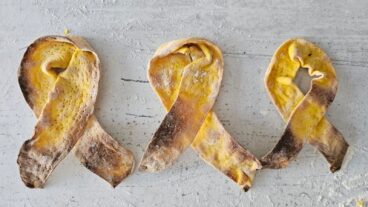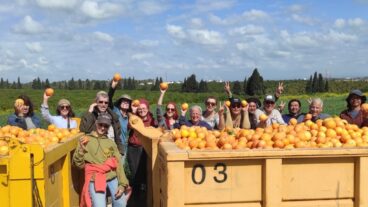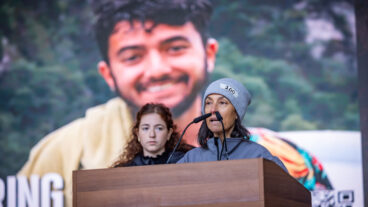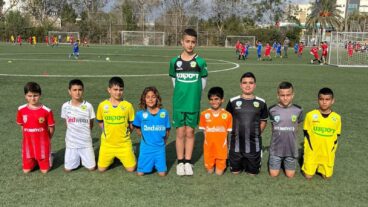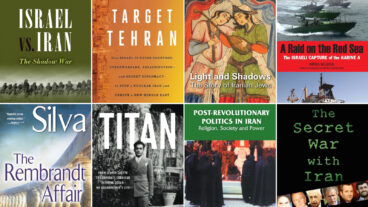“We see this as a model by which we hope to develop between as many adjacent Jewish and Arab communities as possible.” – Mohammed Darawshe.Anyone trying to tell you that coexistence between Jews and Arabs can’t work in Israel has never visited the summer camps sponsored by Givat Haviva.
Two different camp projects over the first half of the summer – one a first time affair and the other a continuation of a established program – brought together Jewish and Arab youth, many of whom lived almost next door to each other but previously had minimal contact.
Givat Haviva, founded in 1949, is Israel’s oldest and largest organization working for peace, pluralism, tolerance, democracy, and justice. Givat Haviva’s Jewish-Arab Center for Peace in Israel won the 2001 UNESCO Prize for Peace Education for its “exceptional efforts in the areas of peace education, promotion of peace and non-violence” and work done for the resolution of conflicts through dialogue”.
For two weeks, 165 Jewish and Arab children from the Wadi Ara-Menashe area in northern Israel participated in camp activities in the shadow of the Givat Haviva Peace Tree – a project that was initially hewn by Arab and Jewish youth last summer.
A normally quiet corner of the Givat Haviva campus was turned in to a pulsating day camp by the children and their Jewish and Arab teenage councilors, some of whom participated in the Peace Tree project exactly the same time last year.
One day was devoted to making music with thick bamboo sticks that the campers had fashioned into musical instruments and decorated with electric pencils. Learning to use the sticks to bang out a musical beat in the mid-morn heat, the children were seriously in to having high volume fun – together, or , all together now as the masters of beat, The Beatles, would have said.
Definitely giving peace and co-existence a chance the Arab and Jewish children are from moshavim and Arab villages in the area of Givat Haviva near the city of Hadera that belong to the Menashe Regional Council.
A close ongoing working relationship promoting co-existence projects has built up between the two organizations over a long period of time involving many hundreds of local youth and educators from both the Jewish and Arab sectors.
Last year Shaked Ronen (18) from Moshav Sde Yitzhak, Mazen Arda (17) and his cousin Alaa Arda (16) from the village of Meiser were among 25 Jewish and Arab teens that sculpted the Peace Tree from a 100 year old eucalyptus tree blown over in a heavy storm the previous winter. This year as counselors, the three teens are continuing to pull together to build bridges over the divide between their different communities.
While chatting with Shaked, Mazen and Alaa, a few 8 and 9 year-old boys and girls gathered around to listen in on the conversation and were more than willing to huddle together for a photograph with their camp leaders. Some of the children wore t-shirts they had designed themselves during a previous days camp activities and white doves of peace were very prominently displayed on most.
With the focus this year on environmental issues and road safety, other children were wearing shirts designed by the local council with luminous yellow strips around the sleeves and various logos encouraging caring about their shared planet and its inhabitants.
The fruits of the physical labor of Shaked, Mazen and Alaa, who all worked with the same children in camp last year before undertaking the Peace Tree project, are now being reaped as the children relate to each other as just that – children.
The much admired Peace Tree stands tall and proud in the center of the green lawns of the Givat Haviva campus grounds casting a giant and protective shadow over Arab and Jewish children, youth and adults who embrace the messages emanating from therein.
Immediately following the two-week Peace Tree camp began a one-week camp for 40 10-12 year-olds that was born under the most difficult circumstances, according to Givat Haviva director of public relations Mohammed Darawshe.
“The camp began as an idea over a year ago, and started as a one-time encounter between the residents of Kibbutz Metzer and the adjacent Arab village of Meiser,” Darawshe told ISRAEL21c.
Metzer was the site of a horrible terror attack in November 2002 in which Revital Ohayon and her two sons Matan, 5 and Noam, 4 were killed when a terrorist infiltrated their home at night and opened fire on them in their sleep. According to Darawshe, the attack became a catalyst for dialogue between the two neighboring communities.
“We engaged a number of community leaders in discussions with leaders from Meiser following the attack. And a good number of residents from Meiser participated in the funeral. This created a window of dialogue between the two communities, and we capitalized on it and created some sub-groups, one of which was children. Over the last year, six meetings were held with children from 4th-6th graders from both communities,” said Darawshe.
He said that the modest goal was for both sides to get to know their immediate neighbor, but the response was so positive that both sides clamored for more.
“Thanks for support from the Swiss Embassy, we were able to finance a summer camp for 40 kids from both communities which focuses on arts as the language of dialogue between Arabs and Jews.”
Residents of both communities participated as facilitators for the camp, which ended last week. On the final day, the children focused on sculpturing.
“We took them to the zoo at Metzer where they created images of the animals there. Then the Arab and Jewish kids exchanged their final products and will display them publicly in their respective neighborhoods,” said Darawshe.
“We see this as a model by which we hope to develop between as many adjacent Jewish and Arab communities as possible. We’ve received tremendously positive feedback, and the kids had a ball sharing personal and cultural background with each other. In a way, the tragedy of the Ohayon family was used to create more cooperation between the two communities and it forged a feeling of a shared destiny and responsibility.”




